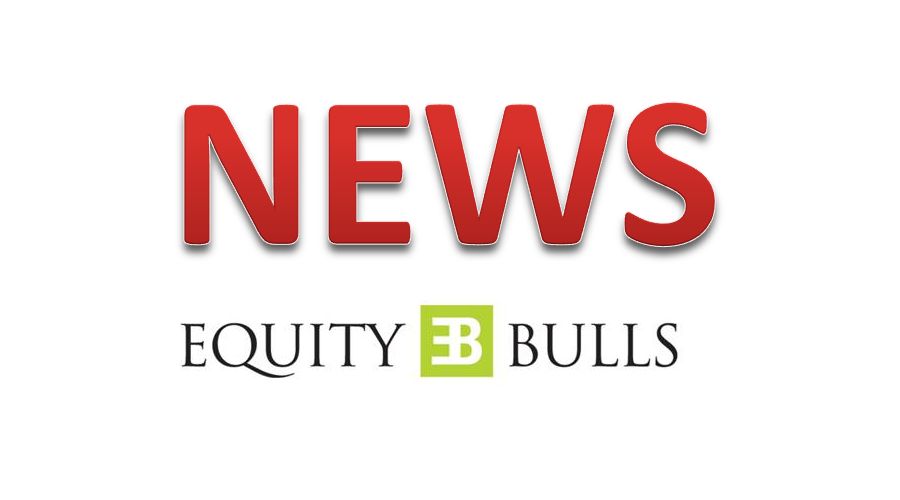 Beezaasan Explotech Ltd completes export order successfully
Beezaasan Explotech Ltd completes export order successfully WeWork India crosses 1 lakh members, reinforcing its leadership in the flexible workspace sector
WeWork India crosses 1 lakh members, reinforcing its leadership in the flexible workspace sector KAKA Industries Limited - Business Update - Q3 FY 2025-26
KAKA Industries Limited - Business Update - Q3 FY 2025-26 Nifty Slips for Third Straight Session, Showed Resilience with Late Bounce back
Nifty Slips for Third Straight Session, Showed Resilience with Late Bounce back ACS Technologies Ltd receives order from Mahindra Defence Systems Ltd
ACS Technologies Ltd receives order from Mahindra Defence Systems Ltd
Market Commentary
Economy: WPI Inflation continues the uptrend - Kotak
Posted On : 2017-09-15 23:07:26( TIMEZONE : IST )

Inflation continues the uptrend. Higher food prices and higher core inflation along with adverse base effect led to WPI inflation surging to 3.2% in August. We expect both CPI and WPI inflation to have bottomed out with CPI inflation inching towards 4.7% and WPI towards 3.6% by March 2018. We expect WPI inflation to undershoot the CPI trajectory from November. We maintain our call for status quo on repo rate for rest of FY2018 and remain watchful of the incoming data, especially given the recent slide in high-frequency growth indicators.
WPI inflation inches higher to a four-month high
August WPI inflation surged to a four-month high of 3.24% (Kotak: 3.4%) compared to 1.9% in July. The upside came from adverse base effect along with higher food and core inflation. Food inflation mirrored trends seen in CPI inflation, rising to 4.4% from 2.1% in July, even as the sequential pace of increase in food prices moderated to 1.5% from 3.9% in July. Vegetables prices increased by a mere 8.6% mom (from 48.9% in July) while egg, meat and fish fell by (-)2% (from (-)0.5% in July). Prices of cereals and pulses remained muted. On the other hand, prices of fruits, milk and spices surged 7.8%, 0.6% and 2.8% mom respectively. Further, the GST impact was visible on higher prices of beverages and tobacco (1.4% and 2.9% mom respectively). Energy inflation, expectedly, surged by 10% yoy led by 0.9% mom increase in the index reflecting trends in global oil prices and domestic prices of fuel products.
Core inflation inches higher on the back of GST and global commodity prices
Core inflation in August increased to 2.55% compared to 2.14% in July, led by sequential increase across-the-board amid pass-through of GST rates (albeit limited) and higher global commodity prices. The heaviest weight item in core inflation, 'basic metals' surged 0.8% mom after three consecutive months of decline as higher global metal prices fed through. 'Machinery and equipment' increased 0.3% mom, 'electrical equipment' increased 0.8% mom and 'motor vehicles, trailers, etc.' by 0.7% mom. Pharmaceuticals, medicinal chemical and botanical products, paper and furniture also witnessed significant increase.
RBI likely to pause; incoming data remains key as growth indicators remain dismal
WPI and CPI inflation have bottomed out with (1) adverse base effect, (2) mean reversion of food prices, (3) GST-related adjustment along with (4) uptrend in global commodity prices likely to put upside pressure on the headline inflation. As RBI remains focused on CPI trajectory, the impact of 7CPC HRA will further lend upside pressure. We expect CPI inflation to tread higher towards 4.7% by March 2018 (4.3% without HRA). We see WPI headline inflation undershooting the retail inflation restating the weak pricing power. Also, core CPI (excluding HRA) inflation is expected to remain tepid, averaging 4% in FY2018 compared to 4.7% in FY2017 underscoring the weak underlying demand pressures. We reiterate our call that the RBI will pause for the rest of FY2018 with room for any further cut opening up again if inflation surprises below the 4% mark on the back of (1) improvement in food supplies amid good monsoon, (2) imported disinflation due to INR appreciation and (3) downward surprise on core inflation owing to weaker-than-expected growth.
